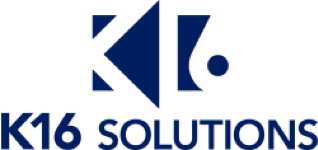Can My Institution Delete Old Canvas LMS Courses?
Wondering if it’s time for your institution to delete old Canvas LMS courses? You’re not alone. Many administrators find themselves looking at a growing stack of courses each year and wondering what to do with them. Here’s why you should hold off on hitting that delete button and explore some smarter alternatives instead.
Take a look at the commonly asked questions Canvas users have about managing data and why there may be a better option than deleting content.
What happens when you delete Canvas LMS data?
Deleting content from Canvas permanently removes it. Before you make that decision, here are a few factors to keep in mind:
- Compliance: Every state has different laws regarding how long institutions need to hold onto data. Most states require 5-10 years. Some states, like the state of Arizona, require that academic records for non-graduating students must be retained for 5 years, while academic records for graduating students must be retained permanently. Maintaining data in a secure way empowers your institution to stay on top of shifting FERPA data policies.
- Academic integrity: Being able to pull data at a moment’s notice is vital for maintaining your school’s academic integrity if a student challenges a grade.
- Impact on users: Deleting data may impact users who rely on that information for their work, studies, or future research.

Can you recover deleted files from Canvas?
Once data is deleted from Canvas, it can’t be recovered or reaccessed. This limitation has led many institutions to consider archiving content.
What are alternatives to deleting Canvas course content?

There are three main options higher education institutions have to archive their course content:
- Cold storage
- Maintain a legacy LMS
- Canvas Archiving
1. Cold storage
Many institutions have opted for cold storage options in the past, but these solutions are often expensive and make finding, extracting, and interpreting data difficult.
2. Maintain a legacy LMS
Some institutions transitioning to a new LMS often choose to hold onto their previous LMS to retain historical course content and data. It’s worth noting that archiving historical course content on your legacy LMS is the most costly option available. But did you know that maintaining read-only access to the platform can cost anywhere from $5,000 to $25,000 per month, adding up to $60,000 to $300,000 in additional expenses annually? Plus, this storage method doesn’t integrate data with your new LMS, making it more difficult to access the information you need.
3. Canvas Archiving by Instructure
In 2023, Instructure released a new offering: Canvas Archiving powered by K16 Solutions. This solution allows customers to archive course content and student data on an archiving platform fully integrated with Canvas LMS. You can back up, access, and retrieve content at any time.
Archive course content on an integrated platform
Considering the implications of deleting Canvas LMS data, institutions are encouraged to explore archiving solutions like Canvas Archiving. This approach ensures compliance, optimizes storage, and preserves valuable data for future reference. Testimonials from schools that have already adopted this solution highlight its security, robustness, and seamless integration with Canvas.
Speak with an archiving expert to determine if archiving your Canvas LMS data is the right choice for your institution.

